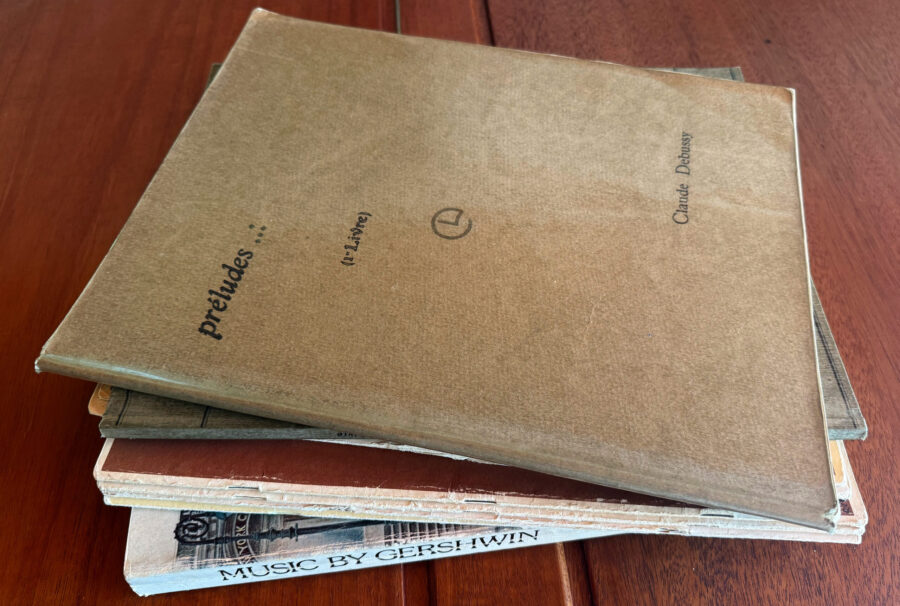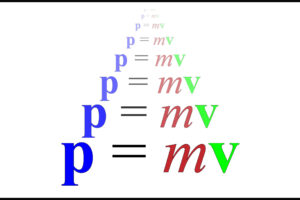When I was about fourteen years old, the piano preludes of Claude Debussy (1862-1918) changed my life. Before then, the piano music my teacher gave me was mostly from the Classical Period with some from the Romantic Period. Czerny and Hanon were the backbone of the technique she taught.
To me, the music all seemed dry and technical—fingers pressing keys at the appropriate time. Nuance of tone and feeling were absent. I can’t say I was a good student—my mother made me practice. Somehow I managed to get by and often received compliments after playing my recital pieces.

My introduction to the music of Claude Debussy was through his Prèludes. The titles describe interesting images such as: La fille aux cheveux de lin (The Girl with the Flaxen Hair) and Des pas sur le neige (Footsteps in the Snow). The instructions at the opening of each piece are moods—for example: “Triste et lent” (Sad and slow), “Animé et tumultueux” (Lively and tumultuous), “Très calme et doucement expressif” (Very calm and softly expressive).
The first Debussy prelude I learned was La cathédrale engloutie (The engulfed Cathedral). The piece is marked: “Profondément calme” (Deeply calm). The world of tone color, feeling, imagination, harmony—and impressionism opened up. I was astonished. I never knew music could do this. I played the prelude again and again, imagining the cathedral being submerged by the water. I could create a mood and a movie with the sounds on the piano.
Following that, I studied several piano preludes by Frédéric Chopin (1810-1849). His preludes are not given titles. However, each one conveys an idea or emotion, and some have been given nicknames. The one I particularly loved to play was No. 15 the “Raindrop Prelude.” I worked over and over on the repeating “raindrop” note—trying to make subtle differences in tone and shading.
In college, I learned pieces from the Mikrokosmos by Bèla Bartók (1881-1945). Although, these are etudes rather than preludes—each one creates a mood, scene, or idea. I particularly liked his use of rhythm and folk melodies. The music seemed fresh and quirky to me.
One other set of preludes I must mention, are the George Gershwin (1898-1937) Three Preludes. I love the rhythms and the jazz and blues influences—plus they are just plain fun! I tried to play them, but technically, they were a little beyond me.
Melody is the essence of music.
— Paul Reisler, composer, songwriter, performer, and teacher (from a sign he saw in India)
Melody is an important part of my music. For me, melody imbues music with soul—and, an interesting melody compels me to go on the journey where the music takes me. In my piano music, I use melody to create moods or evoke images. The melodic ideas dictate the harmonies and rhythms.
The composers I mentioned above have had a tremendous influence on me. I don’t imitate them, but they inspire and inform musical possibilities.

My Seven Preludes for Piano was published in 2019. I consider them to be character pieces—a musical composition which expresses a specific mood or nonmusical idea.
- A Walk in the Park
- Drifting on a Moonlit Lake
- Memories of Childhood
- Wandering in the Snow
- music for g
- Folk Song
- Epilogue
The score for Seven Preludes for Piano is available at Sheet Music Plus.
All of this music is available for licensing at songtradr.com
Here are videos for the first three preludes.
“A Walk in the Park” Prelude No. 1
“Drifting on a Moonlit Lake” Prelude No. 2
I discuss this piece in more detail in a previous blog. Link here.
“Memories of Childhood” Prelude No. 3
I discuss this piece in more detail in a previous blog. Link here.










Leave a Reply
Your email is safe with us.